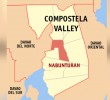There’s no fiesta like Christmas holidays. And it is aptly called the holiday season. A season that extends from as early as the first days of December to the last days of January. It even spills to mid-February, or up to the so-called Feast of the Candelaria among the older folks. I knew this from my parents who belonged to conservative Catholics. And they inherited their own Christmas culture from their own parents who were “saradong Katoliko”.
But the Christmas culture as it has reigned in the consciousness of Filipinos is a happy hybrid offspring of Spanish colonization and American imperialist domination of Philippine society. The noche buenaand media noche hype coupled with the devotional attachment to the Belen and the extraordinary flair for the paroland the fireworks are obviously of Spanish influences. But the Christmas tree and the Christmas carols are a part of the culture-transfer of American lifeways to the Filipino social life.
More than four centuries of foreign acculturation of the Filipino has effectively woven a cultural matrix that has welded both Spanish and American influences in the Christmas consciousness of present-day Filipinos. All together, what has evolved as a typical Filipino Christmas culture is an overflowing enthusiasm for customary practices attached to the celebration of the season. At the core of all these brimming enthusiasm is a fiesta culture.
And in a Christian Catholic country like the Philippines, a fiesta day is always pegged to a religious worship of a patron saint. And there are countless fiesta days in different villages and places, including towns and cities, each one supposedly dedicated or held in honor of a citizen in heaven, such as San Jose, San Roque, San Antonio, and all those saints and martyrs of the Faith. On top of these is the fiesta of the Sto Nino (Holy Child) and the Blessed Virgin Mary in all her various appellations such as Nuestra Senora del Pilar, Nuestra Senora del Perpetuo Soccoro, Virgin of Lourdes, Virgen de Regla, Mary the Immaculate, etcetera, etcetera, etcetera. In the month of May, almost all the barrios in the archipelago claim devotional worship of the Santa Cruz (the Holy Cross), and elaborate this to hyperbolic celebration which transforms it into more of a fashion show or a beauty pageant than a religious festivity—the Santacruzan,where by movie stars are made to render pomp and glamor and glitter to the occasion.
But nothing defeats Christmas as a fiesta. It is, in fact, the fiesta of all fiestas. All sorts of premises and attributions are given to the Christmas season. It is a season of love and charity, a season of grace and blessings, a season of forgiveness and reconciliation, a season of giving more than receiving, of caroling as fund-raising for a worthy project. It is also a season for family reunions, for coming home of OFWs and or the estranged family members. And perhaps, the most popular of all conceivable characterizations is “Christmas is a season for children”.
Now, a special accent is infused into this dedicatory attribute of Christmas. The new Pope would give special attention and concern to the youth in a special celebratory event during his visit to the country this coming January. However, one wonders if this rare species of a Pope also gives special premium to the fiesta character of Christmas such as how we Filipinos do. I doubt that he does, for all his display of simplicity and apparently deep concern for the unfortunate humans of the world has a mark of revolutionary “down-to-earthness” as an act of empathy — in his words and conduct as leader of the Christian Church.
I would like—or I wish for him to come out of his way to bestow honor from his very lips to the struggles of the Indigenous Peoples and other doubly marginalized sectors of our society and bring to centerstage their miserable plight under this hypocritical government of President Noynoy Aquino which has militarized their dwelling places and whose military troops have been violating with impunity their human rights.
Nothing else matters for me in dragging the good Pope’s eminent name into a discussion of the extraordinary fiesta-ness of the Christmas. culture among us Filipinos. Maybe, I can be more sympathetic and tolerant of the season’s jingle — Tenk you tenk you, ang babait ninyo which our neighborhood young children shout in front of my house every one-minute interval every evening since the start of “simbang gabi”.
But in my heart of hearts I would have wished these children—as I would have wished for all adults of our society—to shun this pernicious propensity for fiestas in our consciousness. Much more so, this flair for outward glitters and “pasiklaban” that only complicate, or rather, obliterate the perduring misery and suffering of the masses of our people. What our religious and secular leaders have been doing has been to wage pompous show of merciful acts of charity—deceitful cajolery—that only perpetuate poverty among the masses.
And the extended fiesta fever of the Christmas season is like a narcotic drug that push the masses—and in effect training the little children— to the flourish of mendicant acts and practices. Certainly, our government officials, by their very own habits and conduct, demonstrate their seemingly unintentional encouragement of these attitudes among their constituencies, making them eternally dependent on their patronage, hoping for their generous blessings during the Christmas fiesta season as well as the fiesta-like electoral season.
And so, the fiesta of all fiestas run to almost a quarter of the days of the year.. And it is little wonder why underdevelopment and backwardness are a continuing plague in Philippine social reality.










